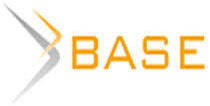Diagnostics of the prerequisites for the implementation of a food safety management system at a public catering enterprise
Currently, ensuring and improving the quality and safety of products at public catering establishments is inextricably linked with the implementation of the principles of HACCP (Hazard analysis and critical control points), as well as the formation of standardized food safety management systems of (FSMS) based on the requirements and recommendations of international and national standards. In this regard, there is a need to develop and test methodological approaches both to the implementation of FSMS in accordance with the requirements of one of the key standards in this area, GOST R ISO 22000-2019 (an analogue of the international standard ISO 22000: 2018), and to diagnose the activities of organizations in the food industry. The purpose of the article is a comprehensive diagnosis of the activity of a particular enterprise representing the sphere of public catering, based on the provisions of GOST R ISO 22000-2019. The diagnostics conducted by the authors made it possible to test a methodical approach to assessing the readiness of public catering enterprises to form standardized FSMS for the purpose of its further replication and implementation into the catering system of preschool, school, secondary vocational and higher educational institutions, as well as medical and recreational institutions. As part of the study, the current approaches to ensuring the required quality and safety of products in the student catering complex "Molodezhny" were evaluated, the prerequisites and conditions for the formation of the FSMS were substantiated. This will allow the student catering facility to begin the gradual deployment of HACCP procedures, then to design, develop, implement, maintain and improve the FSMS, and further extend this practice to other public catering enterprises of the Republic of Mordovia
Palkina, Yu. R., Glukhova, T. V., Surkova, M. A. (2023), “Diagnostics of the prerequisites for the implementation of a food safety management system at a public catering enterprise”, Research Result. Business and Service Technologies, 9 (3), pp. 89-103, DOI: 10.18413/2408-9346-2023-9-3-0-7
















While nobody left any comments to this publication.
You can be first.
Baryshnikova, N. I., Vaiskrobova, E. S. and Mayurnikova, L. A. (2016), “Application of an integrated quality and safety management system at public catering enterprises”, Current problems of modern science, technology and education, Magnitogorsk, Russia, 1, pp. 236-238.
Bаs, M., Temel, M. A., Ersun, A. S. and Kivanç, G (2005), “Prerequisite Programs and Food Hygiene in Hospitals: Food Safety Knowledge and Practices of Food Service Staff in Ankara, Turkey”, Infect Control Hosp Epidemiol, 26, pp. 420-424.
Bulto, T. W., Juta, G. Y., Demissie, B. B., Woldemichael, S. J., Werku, B. C. and Berkessa, Y. W. (2022), “Knowledge of Food Safety and Handling Practices Among Food Handlers of Student Cafeteria at Kotebe Metropolitan University”, Environmental Health Insights, 16 [Online], available at: https://journals.sagepub.com/doi/epub/10.1177/11786302221133951 (Accessed 10 July 2023).
GOST R 55889-2013 Catering services. Food Safety Management System. Recommendations for the use of GOST R ISO 22000-2007 for the food (2020), Standartinform, Moscow, Russia.
GOST R ISO 10014-2008. Management of the organization. Guidelines for achieving economic effect in the quality management system (2020), Standartinform, Moscow, Russia.
GOST R ISO 22000-2019 Food safety management systems. Requirements for organizations involved in the food production chain (2019), Standartinform, Moscow, Russia.
Henroid, D. Jr. and Sneed, J. (2004), “Readiness to implement Hazard Analysis and Critical Control Point (HACCP) systems in Iowa schools”, Journal of THE AMERICAN DIETETIC ASSOCIATION, Feb.104 (2), pp. 180-185.
Julia Ncube, L. (2023), “Managing Foodservice Quality in the Foodservice Industry”, in Kounis, L. D. (ed.), Quality Control, An Anthology of Cases. Intech Open, Available from, [Online], available at: https://www.intechopen.com/chapters/81687 (Accessed 08 July 2023).
Karapetyan, A. A. and Batikyan, A. G. (2019), “Determination of critical control points and critical limits established by the HACCP system at public catering enterprises”, Product quality control, 5, pp. 21–27.
Losevskaya, S. A. (2022), “Features of the basic principles of application of HACCP standards at a public catering enterprise”, International Scientific Research Journal, 10 (124), [Online], available at: https://research-journal.org/archive/10-124-2022-october/10.23670/IRJ.2022.124.1 (Аccessed 19 July 2023).
Methodological approaches to the organization of evaluation of the processes of production (manufacturing) of food products based on the principles of HACCP: Guidelines (2015), Federal Center for Hygiene and Epidemiology of Rospotrebnadzor, Moscow, Russia.
Risk Based Food Inspection Guidelines (2010), Agricultural and Food Organization of the United Nations. Scientific research and extensions, Rome, Italy [Online], available at: https://www.fao.org/publications/card/ru/c/50995bdb-d588-5a9c-a2b3-9d1677d1eae0/ (Accessed 20 May 2023).
Rudnitskaya, V. V. and Pliska, O. V. (2019), “Integration of HACCP principles and risk management to ensure safety and improve the quality of service in the food industry”, Bulletin of the South Ural State University. Series “Food and Biotechnology”, 7 (2), pp. 89–99.
Sharif, L., Obaidat, M. and Al-Dalalah, M. R. (2013), “Food Hygiene Knowledge, Attitudes and Practices of the Food Handlers in the Military Hospitals”, Food Nutr Sci, 4, pp. 245-251.
Shchedrina, T. V., Limareva, N. S., Malakhov, V. B., Orobinskaya, V. N. and Shaltumaev, T. S. (2019), “Safety of products and services in the modern catering sector”,Modern Science and Innovations, 1, pp. 115-119.
Sibanyoni, J. J. and Tabit, F. T. (2017), “Assessing the food safety attitudes and awareness of managers of school feeding programmes in Mpumalanga, South Africa”, Journal of Community Health, 42, pp. 664–673.
Sneed, J., Strohbehn, C., Gilmore, S. A. (2004), “Food safety practices and readiness to implement HACCP programs in assisted-living facilities in Iowa”, Journal of THE AMERICAN DIETETIC ASSOCIATION, 104 (11), pp. 1678-1683.
Tsakali, E., Gortzi, O, Timpis, D. and Tsaknis, J. (2016), “Food Safety and Quality Control in the Public Catering Sector-Intervention Programs”, Nutr Food Technol, 2 (3), [Online], available at: https:https://sciforschenonline.org/journals/nutrition-food/NFTOA-2-126.php (Аccessed 20 July 2023).
Worsfold, D. and Worsfold, P. (2005), “Increasing HACCP awareness: a training intervention for caterers”, Journal of the Royal Society for the Promotion of Health, 125 (3), pp. 129-135.
Yugang, Ji. (2021), “Exploration of constructing the catering quality indices of university canteens in China from the viewpoint of food safety”, British Food Journal, 123 (13), pp. 511–528.
Financing. The study was carried out within the framework of an intra-university scientific grant from the National Research Mordovia State University GB 24-23 «Ensuring food safety of the public catering system based on the methodology of quality management».